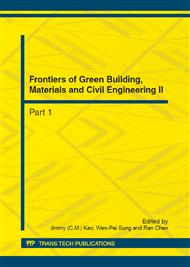[1]
ShiNing Ma, ChangQing Li, Qian Liu, etc, Battlefield emergency maintenance technology of equipment, National Defense Industry Press, Beijing, 2009.
Google Scholar
[2]
J. Lee, M. Cho, H.S. Kim, Bending analysis of a laminated composite patch considering the free-edge effect using a stress-based equivalent single-layer composite model, J. International Journal of Mechanical Sciences. Vol. 53(2011) 606-616.
DOI: 10.1016/j.ijmecsci.2011.05.007
Google Scholar
[3]
A. Baker, Bonded composite repair of fatigue-cracked primary aircraft structure, J. Compot. Struct. Vol. 47(1999) 431-443.
DOI: 10.1016/s0263-8223(00)00011-8
Google Scholar
[4]
U. Turaga, R. Singh, Modeling of a patch repair to a thin cracked sheet, J. Engineering Fracture Mechanics. Vol. 62(1999) 267-269.
DOI: 10.1016/s0013-7944(98)00088-5
Google Scholar
[5]
P. Chalkley, A. Baker, Development of a generic repair joint for certification of bonded composite repairs, J. International Journal of Adhesion & Adhesives. Vol. 19(1999) 121-132.
DOI: 10.1016/s0143-7496(98)90028-8
Google Scholar
[6]
HuaFeng Wang, ZhenHua Li, XinQing Wang, etc, Preparation and mechanical properties of carbon nanotubes/resin epoxy composite, J. Acta Materiae Compositae Sinica, Vol.21,5(2004) 47-51.
Google Scholar
[7]
XianHong Chen, Ming Lin, ZhenHua Chen, Research on functionalization of multi-walled carbon nanotubes and its toughening epoxy resin, J. Material Review. Vol. 1(2007) 121-123.
Google Scholar
[8]
J. H. Lee, K. Y. Rhee, S. J. Park, The tensil and thermal properties of modified CNT-reinforced basalt/epoxy composites, J. Materials Science and Engineering A. Vol. 527(2010) 6838-6843.
DOI: 10.1016/j.msea.2010.07.080
Google Scholar
[9]
JiFang Fu, A study on high performance modification of epoxy with nanostructure materials and its properties, D. Shanghai University. (2008).
Google Scholar
[10]
Lin Lin, Wei Song, ChangQing Li, Curing kinetics and thermal stability of low viscosity epoxy resin systems, J. China Surface Engineer. Vol. 5(2011) 73-77.
Google Scholar


